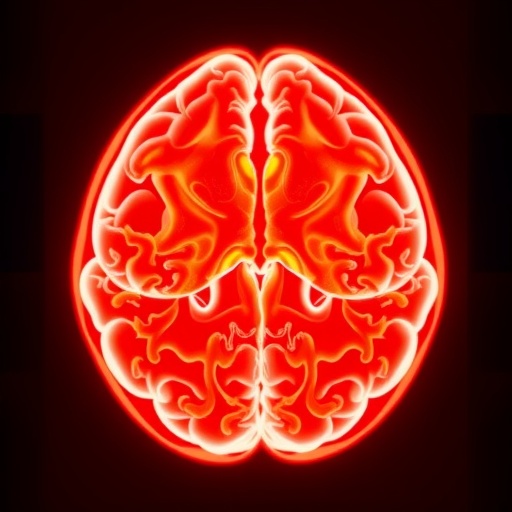In a groundbreaking advancement for ophthalmology, researchers have unveiled a sophisticated machine learning methodology that harnesses the power of multi-modal imaging techniques to detect lesions associated with age-related macular degeneration (AMD). This debilitating eye condition stands as the primary cause of central vision loss among the elderly, significantly impairing daily activities and quality of life. The recent study introduces an innovative approach to streamline the clinical assessment of AMD, promising to transform diagnostic precision and patient experience.
At the heart of this pioneering research lies the integration of diverse imaging modalities—color fundus photography, infrared fundus imaging, optical coherence tomography (OCT), and optical coherence tomography angiography (OCTA). These technologies provide complementary views of the retinal structure and vasculature, enabling a comprehensive visualization of ocular changes induced by AMD. By leveraging these high-resolution images, the research team developed an advanced algorithm designed to distinguish between healthy retinal regions and those compromised by lesions.
Conventionally, the evaluation of visual function in AMD patients involves microperimetry, a technique that assesses light sensitivity across the macula. Although valuable, microperimetry can be onerous for patients, demanding prolonged attention and inducing fatigue. The novel machine learning model aims to mitigate these drawbacks by focusing testing on regions identified as lesion-prone, thereby reducing test duration and enhancing patient comfort without sacrificing diagnostic rigor.
The core analytical engine underpinning the study is a gradient-boosted tree-ensemble model, a powerful machine learning algorithm well-suited for handling complex, high-dimensional datasets. The researchers trained this model on an unprecedented dataset comprising over 344,000 distinct retinal regions extracted from the various imaging modalities. Such an extensive training set empowered the algorithm to learn subtle variations indicative of lesion pathology, underpinning its remarkable detection capabilities.
Results from the study are striking, demonstrating an area under the receiver operating characteristic curve (AUC) of 0.95. This metric signifies extraordinary accuracy in discerning end-stage lesions within chronic AMD cases, underscoring the model’s potential as a reliable diagnostic adjunct. The AUC value not only reflects high sensitivity and specificity but also heralds a new benchmark in automated lesion detection.
Importantly, the multi-modal imaging approach addresses the limitations inherent in relying on a single imaging modality. For instance, color fundus photographs excel at visualizing pigmentary changes but may miss deeper structural anomalies best captured by OCT. Conversely, OCT and OCTA deliver cross-sectional and vascular insights but can benefit from the contextual information provided by fundus images. The fusion of these data streams within an intelligent computational framework represents an elegant solution to the diagnostic challenges posed by AMD.
This integrative technique offers profound implications for personalized medicine in ophthalmology. By accurately mapping lesion locations, clinicians can tailor microperimetry tests to focus on vision-threatening areas, optimizing testing efficiency and patient adherence. Moreover, early and precise lesion detection can facilitate timely therapeutic interventions, potentially slowing AMD progression and preserving vision.
Beyond clinical utility, the study paves the way for incorporating artificial intelligence (AI) into routine eye care workflows. The automation of lesion detection could streamline screening programs, especially in resource-limited settings where specialist availability is constrained. Furthermore, the model’s adaptability suggests potential applications across a spectrum of retinal diseases beyond AMD.
While the study marks a significant leap forward, it also invites further exploration into integrating additional data types, such as genetic markers or longitudinal imaging, to enhance predictive accuracy. Future research may focus on refining the model’s interpretability and investigating its performance in diverse patient populations.
The fusion of cutting-edge imaging and AI heralds a new era in ophthalmologic diagnostics, moving closer to a future where retinal diseases like AMD can be detected earlier, managed more effectively, and patient outcomes vastly improved. This research underscores the transformative potential of machine learning in revolutionizing healthcare.
As the global population ages, the burden of AMD is projected to escalate, magnifying the demand for efficient and precise diagnostic tools. By combining multi-modal imaging with robust machine learning algorithms, researchers are charting a path towards meeting this critical clinical need, offering hope to millions affected by vision loss worldwide.
In summary, this innovative approach signifies a paradigm shift in age-related macular degeneration diagnosis and management. The study not only exemplifies the synergy between technology and medicine but also sets a precedent for future interdisciplinary endeavors aimed at combating complex ocular diseases.
Subject of Research: Age-related macular degeneration lesion detection using machine learning and multi-modal imaging
Article Title: Lesion detection in age-related macular degeneration with a multi-modal imaging and machine learning approach
Article References: Yap, C.L., Tan, T.F., Tan, A.C.S. et al. Lesion detection in age-related macular degeneration with a multi-modal imaging and machine learning approach. BioMed Eng OnLine 24, 111 (2025). https://doi.org/10.1186/s12938-025-01439-9
Image Credits: AI Generated
DOI: https://doi.org/10.1186/s12938-025-01439-9
Tags: advanced diagnostic algorithmsage-related macular degeneration detectionclinical assessment of macular degenerationenhancing diagnostic precision for AMDhigh-resolution retinal imagingimproving patient experience in AMDinnovative approaches in eye caremachine learning in ophthalmologymulti-modal imaging techniquesoptical coherence tomography applicationsreducing fatigue in visual function testingretinal imaging technologies





